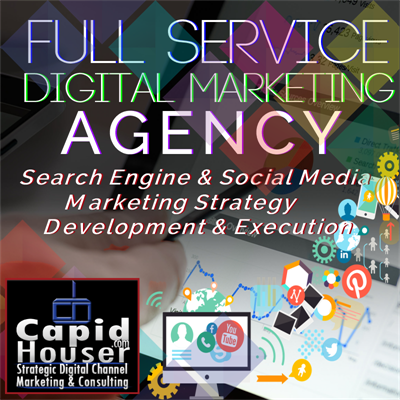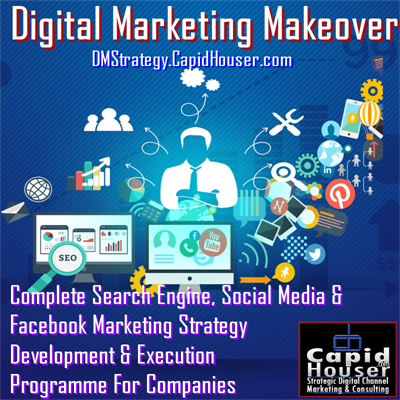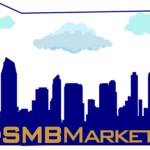In the early 1900s, IT experts could take dozens of years to develop a software computer. Then came Agile, and the world of Information Technology became a much, much better place.
The implementation of Agile methodologies has then revolutionised the way software developers and industry leaders design and build products for their clients. Unlike traditional methods, Agile makes the development process faster and easier, and of course less frustrating than before.

Image from Pexel
But did you know that the origin of Agile started outside of IT? In this brief but detailed history of Agile innovation, we will get to know more about the pioneers of Agile methodologies, the practices that yield a foundation for this approach and how Agile Manifesto was created.
Are you ready to travel back in time and discover the long yet colourful heritage of Agile? Here we go.
1930s: The “Plan-Do-Study-Act” Cycle
In the 1930s, the physicist and statistician Walter Shewhart of Bell Telephone Laboratories proposed a series of short Plan-Do-Study-Act (PDSA) cycles. PDSA is an iterative and incremental-development methodology and involves a four-stage problem-solving model which is used to improve a process or execute change.
The iterative and incremental-development methodology are key practices in Agile. This approach works by breaking projects into pieces instead of delivering them all at once near the completion. It uses user stories and prioritising them continuously, usually a one or two-week cycle called iterations or sprints.
Shewart shared PDSA methodology to his mentee, W. Edwards Deming. Deming used PDSA extensively in Japan and was hired to train several Toyota managers. His expertise in the PDSA cycle leads the company to develop the famous Toyota Production System (TPS), which is known as the primary source of “lean” thinking that many organisations are still using up to this day.
Deming published the PDSA cycle in The New Economics in 1993. He also renamed it the “Deming Cycle”. Each stage of the Plan-Do-Study-Act cycle comprises the following actions:
Plan – plan a change or a test, aimed at improvement
Do – carry out the change or the test (preferably on a small scale)
Study – study the results. What did we learn? What went wrong?
Act – adopt the change or abandon it, or run through the cycle again
The incremental and iterative development methodologies were also used to create the X-15 hypersonic jet in the 1950s.
1960’s: Evolutionary Project Management
Evo, short for Evolutionary Value Delivery, was considered by many Agile experts as the “original” agile method. Tom Gilbs originally used it as a project management method back in the 1960s, both personally and through clients. Evo focuses on “delivering measurable multiple value requirements to stakeholders” and recommends two-week iterations that focus on the delivery of product each iteration.
The principles of Evo, which are detailed in the Systems Engineering Conference paper, are as follows:
E1: Decompose by performance results and stakeholders;
E2: Do high-risk steps early, learn how ‘unknowns’ really perform;
E3: Focus on improving your most valuable performance objectives first;
E4: Base your early evolution on existing systems and stakeholders;
E5: Design to cost dynamically;
E6: Design to performance dynamically;
E7: Invest in an open-ended architecture early on;
E8: Motivate your team by rewarding results;
E9: Prioritize changes by value, not place in queue;
E10: Learn fast, change fast, adapt to reality fast.
1986: The New New Product Development Game
In January 1986, Hirotaka Takeuchi and Ikujiro Nonaka, both University professors, published an article in Harvard Business Review called The New New Product Development Game. In their article, they discussed the analogy of rugby game as a new way of developing produpcts and delivering projects.
Instead of following the traditional “relay race” approach, where one group passes its completed phase to the next group of functional specialists, they proposed moving towards the team-oriented “rugby” approach. According to Takeuchi and Nonaka, the rugby approach is “where a team tries to go the whole distance as a unit, passing the ball back and forth.” The rugby approach is a holistic method that focuses on six characteristics:
- built-in instability
- self-organising project teams
- overlapping development phases
- multi-learning
- subtle control
- organisational transfer of learning
Scrum, a popular and widely used agile framework, is inspired by this approach

Image from Pexel
1990s: The Emergence of Various Agile Methodologies
The 1990s marked the proliferation of various Agile methodologies such as Crystal Framework, Scrum, Dynamic System Development Method (DSDM), and Extreme Programming (XP).
Crystal Framework in 1992 – created by Allistair Cockburn, the Crystal Framework focuses on people and their interactions rather than processes and tools. Cockburn defines Crystal as “a family of human-powered, adaptive, ultra-light, ‘stretch-to-fit’ software development methodologies.” He believed that when working with a project, skills, teamwork, and communication have the biggest impact on the outcome of the project.
Scrum in 1993 – Inspired by Takeuchi and Nonaka’s rugby approach, Jeff Sutherland created a new way of developing software and called his method “Scrum”. Using Scrum methods, Sutherland could finish his projects on time with fewer issues than any previous release. In 1995, Sutherland and his colleague Ken Schwaber officially presented the Scrum method to the public.
Dynamic System Development Method (DSDM) in 1994 – known as the predecessor of the agile project management, DSDM is an agile methodology that uses an iterative approach to software development. It is largely based on the methodology of Rapid Application Development (RAD) and is built on four principles: (1) feasibility and business study, (2) functional model and prototype iteration, (3) design and build iteration, (4) implementation.
Extreme Programming in 1999 – Extreme Programming or XP is an agile project management methodology created by Kent Beck, the Lead Software Engineer at Chrysler Comprehensive Compensation System (C3). XP is considered as one of the most popular agile methods because of its proven success at many companies and its focus on customer satisfaction as well as an emphasis on teamwork. XP also uses a very simple set of rules that are based on sound values and principles: planning, managing, designing, coding, and testing.

Image from Pexel
2001: The Gathering in Utah and the Agile Manifesto
The creation of Agile Manifesto had its own interesting backstory before it became the most popular software development manifesto we have known today. It all started when seventeen developers, which includes Alistair Cockburn, Jeff Sutherland, Ken Schwaber, and Kent Beck, met and gathered in Snowbird, Utah, for a three-day retreat.
The working session had two main objectives:
- Each person will present to the group his lightweight method approach to building software
- Discuss the surge of heavyweight methods and how to address them
A lot of things happened during the working session, and one of these was the decision to change the “lightweight” terminology with “agile”, which was suggested by one of the attendees who read the book “Agile Competitors and Virtual Organizations: Strategies for Enriching the Customer”. In full agreement, the term “Agile” became the new name for the movement, and then the Agile Manifesto was written with the following four key values:
- Individuals and interactions over processes and tools
- Working software over comprehensive documentation
- Customer collaboration over contract negotiation
- Responding to change over following a plan
“At the core, I believe Agile Methodologists are really about “mushy” stuff—about delivering good products to customers by operating in an environment that does more than talk about “people as our most important asset” but actually “acts” as if people were the most important, and lose the word ”asset”. So in the final analysis, the meteoric rise of interest in—and sometimes tremendous criticism of—Agile Methodologies is about the mushy stuff of values and culture.”, (excerpt from the history of the Agile Manifesto.)
2011: Scaled Agile Framework
The Scaled Agile Framework methodology (or SAFe for short) is created by Dean Leffingwell, the Chief Methodologist at Scaled Agile Inc. and the author of the best selling book Agile Software Requirements. SAFe is developed for teams and large organisations to help them become flexible and manage the challenges they have when practising agile; thus it is built on three pillars:
The latest version SAFe 4.6, which was released last October 2018, introduces the Five Competencies for Lean Enterprises: Lean-Agile Leadership, Team and Technical Agility, DevOps and Release on Demand, Business Solutions and Lean Systems Engineering, and Lean Portfolio Management. Up to this day, SAFe is still one of the most popular agile frameworks and prides itself as the world’s leading framework for scaling Agile across the enterprise.
The business changes. The technology changes. The team changes. The team members change. The problem isn’t change, per se, because change is going to happen; the problem, rather, is the inability to cope with change when it comes.— Kent Beck
Today, Agile is still one of the best methodologies used by many organisations, including Fortune 500 companies. Agile is not only a framework that consists of Scrum, Kanban, and XP, but foremost it is also a mindset that can be learned through coaching, mentoring or using an agile productivity tool. At Life Intelligence Group, our products and services are grounded in the principles of Agile. We believe that being agile not only starts in the workplace; it can also start at home. And it starts by changing our old habits, having a growth mindset and sticking to our goals until we achieve them.
Transitioning to Agile? We’ve got you covered! Our Agile experts at Life Intelligence Group can train your company and employees in the Scaled Agile Framework for a smooth and successful transition. Our courses also help you to apply Agile practices at home and build an Agile Mindset for a more productive, stress-free life. To learn more, please visit our website: https://lifeintelligencegroup.com/







